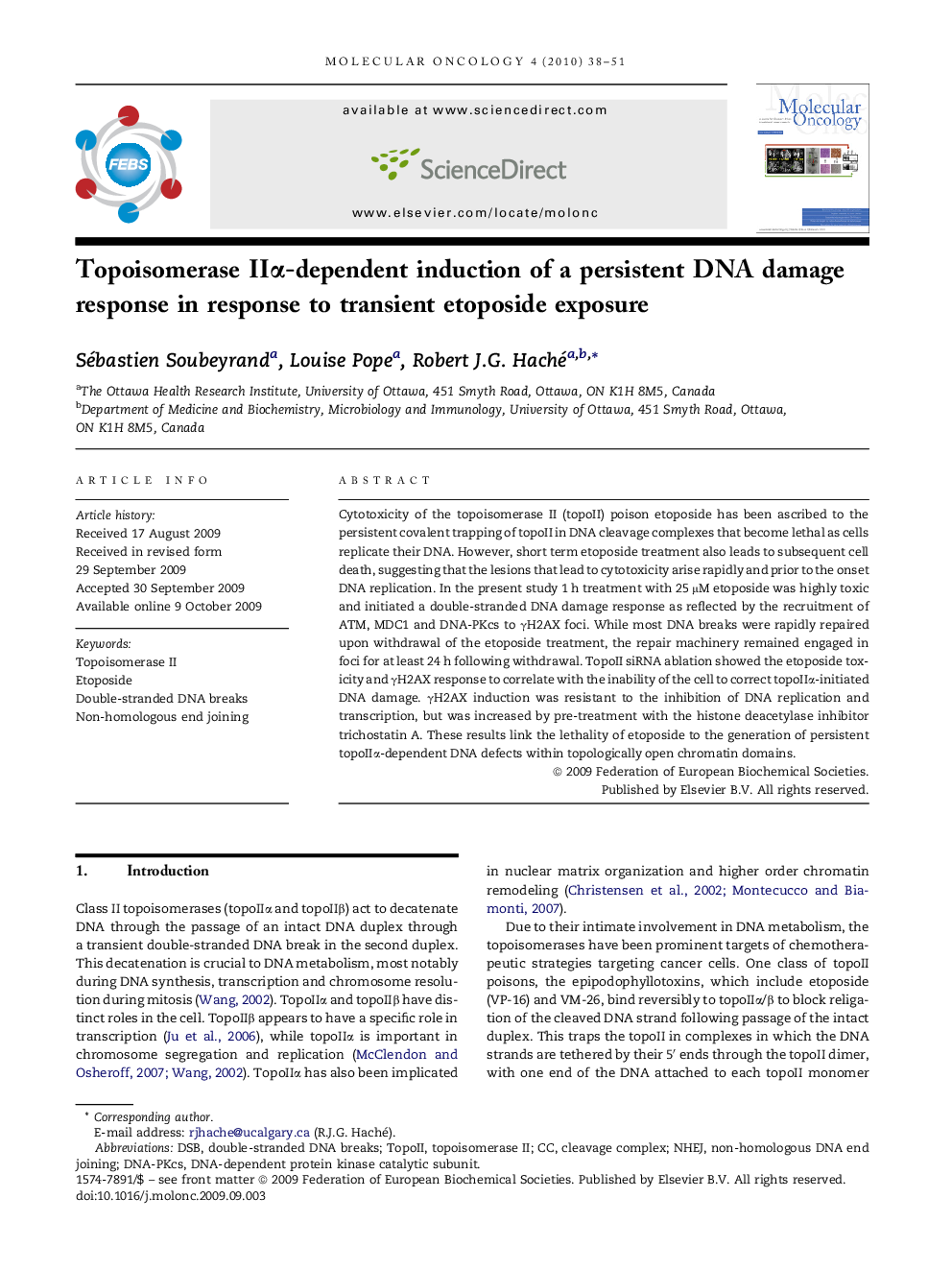| Article ID | Journal | Published Year | Pages | File Type |
|---|---|---|---|---|
| 2145783 | Molecular Oncology | 2010 | 14 Pages |
Cytotoxicity of the topoisomerase II (topoII) poison etoposide has been ascribed to the persistent covalent trapping of topoII in DNA cleavage complexes that become lethal as cells replicate their DNA. However, short term etoposide treatment also leads to subsequent cell death, suggesting that the lesions that lead to cytotoxicity arise rapidly and prior to the onset DNA replication. In the present study 1 h treatment with 25 μM etoposide was highly toxic and initiated a double-stranded DNA damage response as reflected by the recruitment of ATM, MDC1 and DNA-PKcs to γH2AX foci. While most DNA breaks were rapidly repaired upon withdrawal of the etoposide treatment, the repair machinery remained engaged in foci for at least 24 h following withdrawal. TopoII siRNA ablation showed the etoposide toxicity and γH2AX response to correlate with the inability of the cell to correct topoIIα-initiated DNA damage. γH2AX induction was resistant to the inhibition of DNA replication and transcription, but was increased by pre-treatment with the histone deacetylase inhibitor trichostatin A. These results link the lethality of etoposide to the generation of persistent topoIIα-dependent DNA defects within topologically open chromatin domains.
